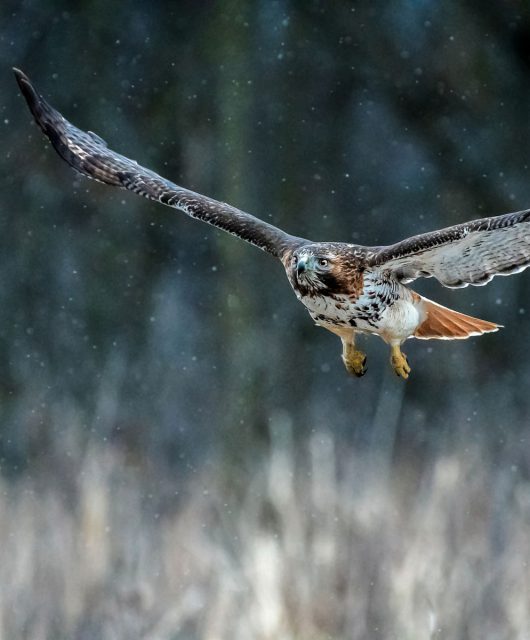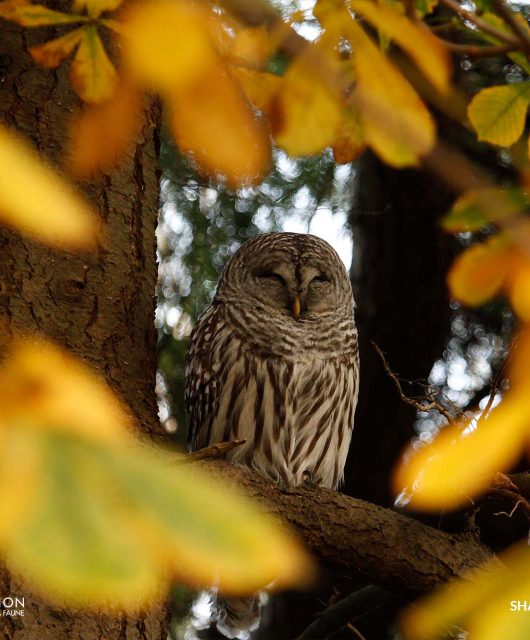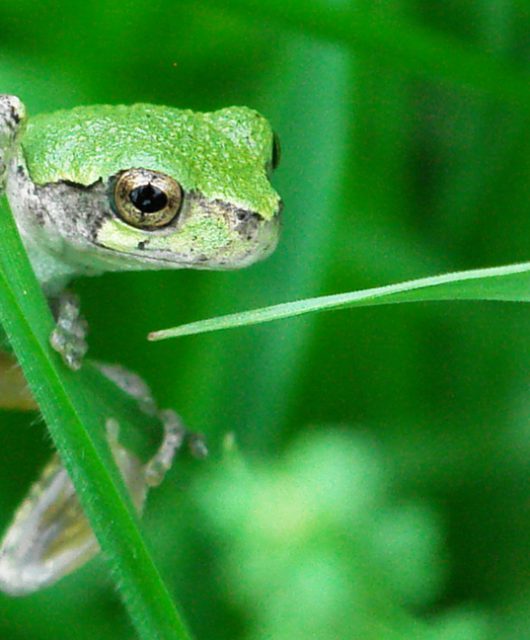“So, what do you do?”
My barber asked me this common enough question a few weeks ago. In the spirit of small talk, I boiled it down to the most basic idea of what I’m doing for the summer; I look for turtles.
He gave me a look, a chuckle, and a feeling that he didn’t take it seriously. I couldn’t blame him. It sounds too silly and whimsical to be actual work, and some of the time it is.
But I’ll explain it a little better for you than I did for the barber.
Turtle Team
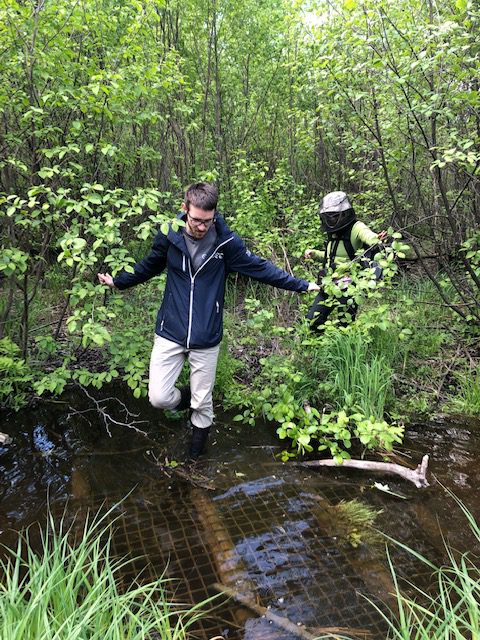
I am one of the four proud members of the Canadian Wildlife Federation’s Turtle Team, led by David Seburn, CWF’s Freshwater Turtle Specialist. Our work is focused on the conservation of Canada’s threatened turtle populations.
This involves public outreach and education, reducing risks to vulnerable populations through:
- Egg collection and incubation
- Road surveys and identification of road mortality hotspots
- Habitat protection through wetland surveys
Looking for Turtles
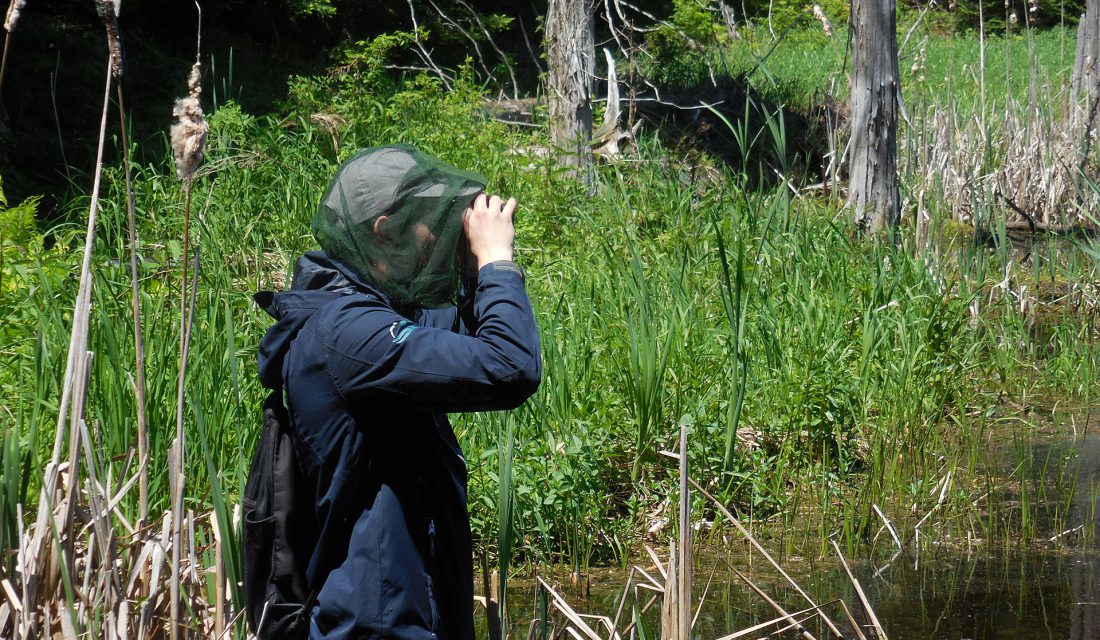
The wetland surveys are carried out on Crown land or the private properties of landowners who are interested in turtle conservation. Once we arrive at the wetlands, we strap on our wading boots, don our bug nets, sling our binoculars around our necks and wade out in search of turtles.
Our focus is the Threatened Blanding’s Turtle. Our goal is to protect the precious habitat in which these turtles are found. To do this, we need to find a Blanding’s Turtle, take a photo of it and record where we found it. At this point, the wetland is officially protected under the Endangered Species Act.
Easy enough, right?
Well, what if I told you that endangered is usually synonymous with rare and hard to find. Also, wetlands are usually associated with biting insects – a lot of them.
Some days we spend six hours waist-deep in muddy water surrounded by legions of blackflies and mosquitos — all trying to get a bite out of us. The sun is beating down on our heads, but there’s no way of cooling off because if we remove any clothing at all, we just provide more banquet for the bugs to munch.
And that’s not to mention the ticks. It’s been a few weeks and one of us has already been bitten by a Deer Tick, which can transmit Lyme Disease (thankfully she was fine – always immediately seek medical treatment if you have been bitten by a tick!).
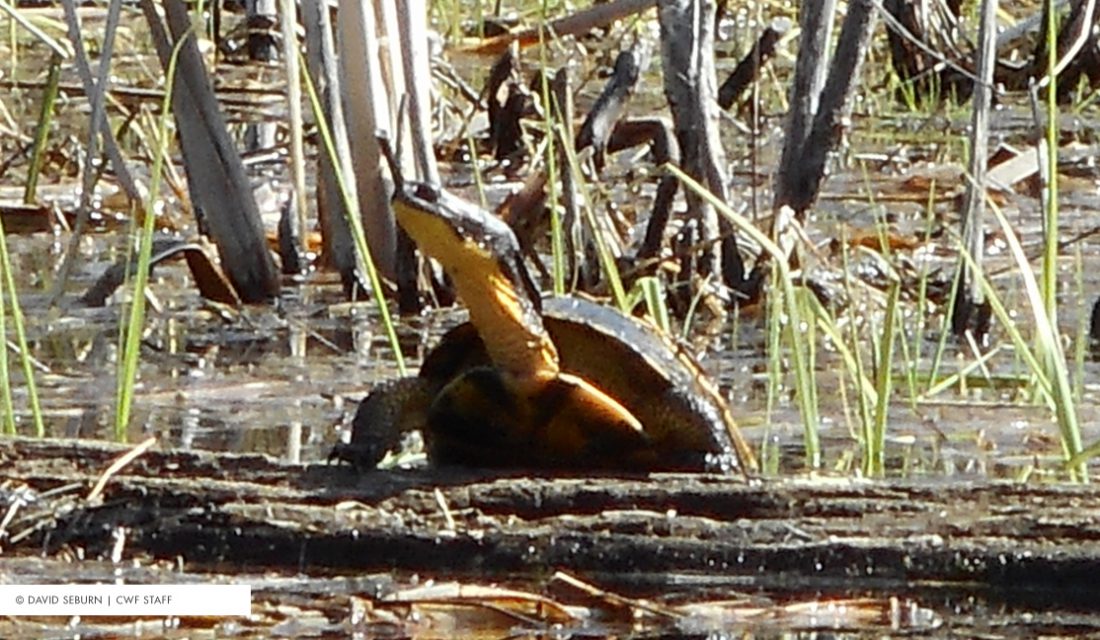
Even after all of that, many times we don’t actually find a Blanding’s Turtle. It can be exhausting and extremely frustrating work, especially when you know they’re likely there, we just can’t find them. But when you do find one of these remarkable creatures, the effort is completely worth it.
The Journey’s Not That Bad, Either
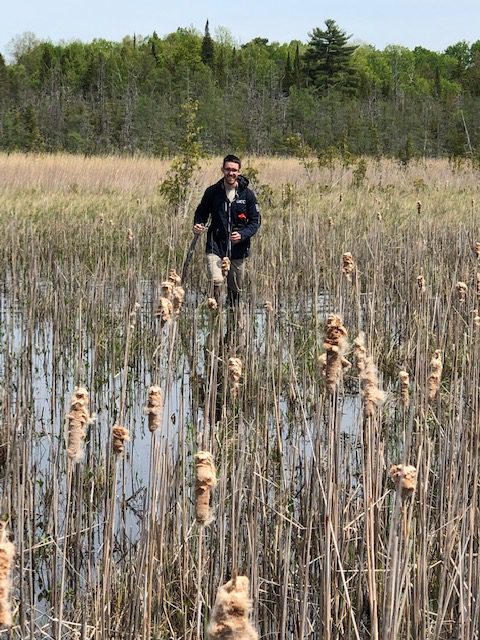 The places we go to survey are undeniably beautiful, ancient and teeming with a variety of plant and animal life.
The places we go to survey are undeniably beautiful, ancient and teeming with a variety of plant and animal life.
I’ve seen a community of nesting Great Blue Herons, porcupines climbing trees, a family of coyotes, a ball of mating snakes, prehistoric-looking snapping turtles the size of manhole covers, and even multi-storied beaver dams! These places are magical, diverse and incredibly important, which makes the stakes for us to find Blanding’s Turtles and protect these ecosystems even higher. Upwards of 70 per cent of southern Ontario’s wetlands have already been lost.
Although most people have a romanticized view of fieldwork, at times it can be incredibly stressful, labour intensive and uncomfortable. It’s tough and dirty work. But it is paramount to turtle conservation, and someone’s got to do it. This summer it got to be me.
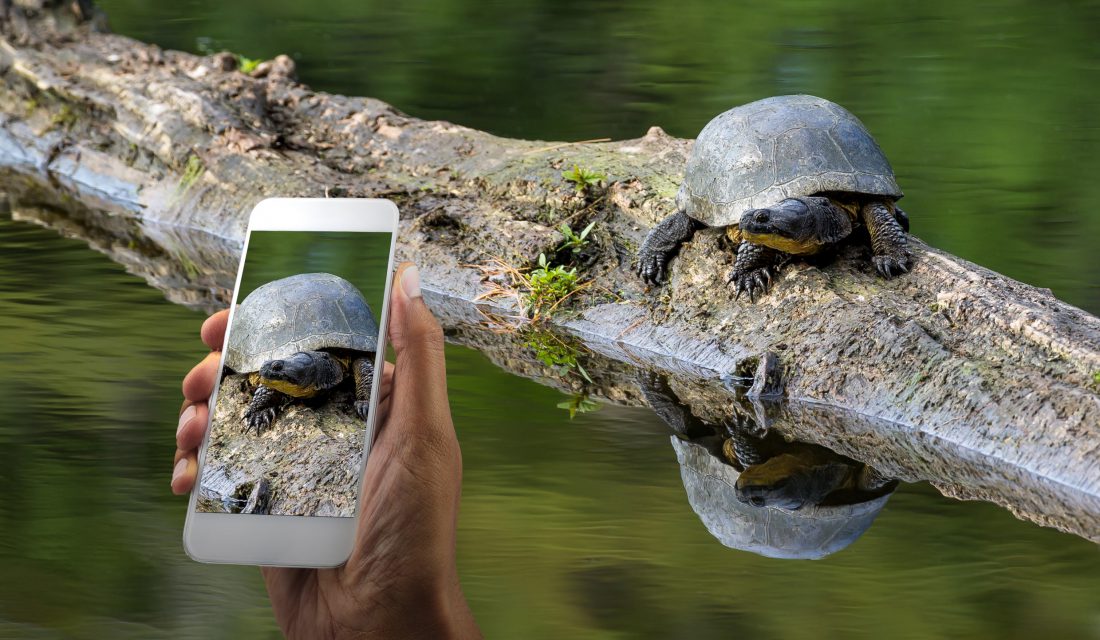
You can help too! If you see a Blanding’s Turtle please report it on iNaturalist.ca. You can find out more about our turtle work at HelpTheTurtles.ca.
Author:
![]()
Chris Sullivan
Chris Sullivan is a participant in the Canadian Conservation Corps. This summer he is helping out with CWF’s Help the Turtles project in eastern Ontario.

